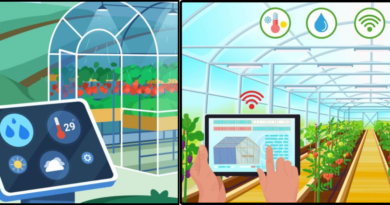Biomimicry in education: Bio-Inspired Living Revolution

Introduction:
Welcome to the fascinating world of the Bio-Inspired Living Revolution (biomimicry in education). Think of how living and innovating may change if we discover the mysteries of the natural world. This is not just a glimpse into the future for you; it’s a fascinating trip into the core of biomimicry, where the wonders of nature serve as models for cutting-edge technology. In this exciting journey of bio-inspired living, join us as we examine the advantages, difficulties, and environmentally beneficial inventions that await us ahead!
Benefits of the Bio-Inspired Living Revolution: (biomimicry in education)
The Bio-Inspired Living Revolution (biomimicry) unfolds a myriad of benefits, ushering in a new era where nature’s wisdom becomes the cornerstone of innovation. Let’s delve into the advantages that make this paradigm shift not just exciting but crucial for our sustainable future:
Enhanced Efficiency

Through leaning on nature’s efficiency, biomimicry may create technologies and systems that function more effectively. Optimizing resources and streamlining processes are made possible by adopting creative designs for living things.
Preservation of Biodiversity:
A better knowledge and appreciation of biodiversithttps://en.wikipedia.org/wiki/Biodiversityy arises as we research and use bio-inspired solutions. The very process of copying the patterns found in nature helps to maintain a variety of ecosystems by emphasizing the value of peaceful coexistence.
Sustainability Embodied:
Sustainable living is fundamental to bio-inspired living (biomimicry). How Sustainable Practices Can Extend Your Life Our ability to imitate natural processes allows us to design solutions that are environmentally friendly and promote a more sustainable approach to product development and technology.
Innovative Problem-Solving:
Throughout its existence, nature has shown itself to be an unparalleled problem solver. By offering fresh viewpoints on problems, bio-inspiration promotes creative problem-solving. This method encourages both students and researchers to think creatively and unconventionally.
Resource Optimization:
Utilizing resources is a skill that nature has perfected, and biomimicry helps humans to emulate it. Through observing ecosystemshttps://en.wikipedia.org/wiki/Ecosystem that survive with the least amount of resources, we may design technology that limits waste, lowers energy use, and builds a society that is more resource-efficient and sustainable.
Cross-Disciplinary Learning:
The combination of biology and engineering, chemistry and design, is known as biomimicry. Pupils investigating this revolution discover the wonders of interdisciplinary learning while also gaining an understanding of the complexities of the natural world, equipping them for the complex issues of the future.
Educational Paradigm Shift:
A paradigm shift in education is prompted by the use of bio-inspiration. It turns learning into an active process that promotes discovery motivated by curiosity and instills a feeling of environmental responsibility. Students start to actively contribute to sustainable solutions in addition to being knowledge consumers.
Inspiration for Sustainable Design:
The aesthetics of design are influenced by bio-inspired living. Sustainable and visually beautiful designs arise from taking influence from nature’s blueprints. The revolution encourages a change toward developing practical yet aesthetically pleasing solutions in everything from architecture to product design.
Global Collaboration for a Green Future:
There are no boundaries for the bio-inspired living revolution. As scientists, researchers, and students from all over the world come together to explore and apply solutions inspired by nature, it promotes international collaboration. This cooperative endeavor offers a ray of hope for a future that is shared and sustainable.
To sum up, there are several advantages to the Bio-Inspired Living Revolution (biomimicry in education), including those related to effectiveness, sustainability, https://en.wikipedia.org/wiki/Sustainable_development flexibility, and learning. Students who take on this fascinating trip not only learn new things but also develop into change agents who help create a future in which creativity coexists peacefully with the complex dance of the natural world.
Disadvantages and Challenges of Biomimicry in Education:
Even though the Bio-Inspired Living Revolution has a lot of potential, it’s important to be aware of the difficulties and drawbacks that come with this novel strategy. Now let’s examine the other side of the formula, which is as follows:
Complex Implementation:
It’s not always easy to replicate the complex patterns and mechanisms seen in nature. Due to the difficulty of merging bio-inspired solutions into real-world applications, significant research, development, and fine-tuning are frequently needed, all of which can consume a lot of resources.
Ethical Considerations:
It is unethical to interfere with natural processes. Because the use of bio-inspired technology may unintentionally affect ecosystems, researchers must carefully consider the ethical implications of their work to make sure that it respects social and environmental values.
Consequences that might not be intended:
The use of bio-inspired solutions in different industries could result in unexpected results. Because ecosystems are interdependent, changes in one place can have an impact on other parts of the environment as well. Pupils must consider the possible unexpected effects of their inventions.
Technological Dependency:
A dependence on nature for replies could come from using bio-inspired technology excessively. Nature is a finite resource, even if it offers clever creations. Maintaining equilibrium between harnessing the principles of nature and creating sustainable substitutes is essential to preventing over-reliance.
Commercialization Challenges:
The challenge is translating biomimicry from intellectual ideas into economically viable goods. The broad spread of bio-inspired technology is delayed by obstacles pertaining to pricing, scalability, and market acceptance that frequently exist between breakthrough ideas and mass manufacturing.
Limited Understanding of Natural Systems:
Even with biomimicry’s advances, we still don’t fully grasp the natural world. Replicating biological systems is difficult because of their huge and intricate complexity. Unexpected results and unexpected effects might result from incomplete information.
Educational Complexity:
Traditional teaching strategies need to change in order to include bio-inspired learning in the educational curriculum. It might be difficult for teachers to modify lesson plans and materials to include multidisciplinary methods, which may require more funding and training.
Regulatory and Legal Frameworks:
The use of bioinspired technology could advance more quickly than the creation of legal and regulatory frameworks. This delay may raise concerns related to environmental effects, safety, and ethical issues; thus, it will be important to work together to create standards for ethical bio-inspired innovation.
Interconnectedness of Systems:
Applying isolated bio-inspired solutions is challenging due to the interdependence of natural systems. A comprehensive understanding of the interactions between various ecosystem components is necessary for sustainable innovation, as changes in one area of the ecosystem can have downstream effects.
Public Perception and Acceptance:
The public may be reluctant to accept bio-inspired inventions because of misunderstandings or a lack of knowledge. Educating the public and highlighting the advantages while addressing concerns are necessary for overcoming uncertainty and promoting public acceptance.
Individuals participating in the Bio-Inspired Living Revolution become pioneers in negotiating the difficulties of sustainable innovation by taking on these problems head-on. Future inventors and thinkers may help create a more responsible and resilient future by identifying these possible drawbacks and cooperating to overcome them.
Conclusion:
The Bio-Inspired Living Revolution, or biomimicry in education, is an appeal for students to become sustainable future architects, not merely an abstract idea. Students have the power to greatly impact the future of a world where innovation and the environment dwell peacefully by comprehending and using the genius of nature. Let creativity and curiosity lead the way as we set out on our adventure, leading us to a time when the wonders of nature will not only be appreciated but also imitated for the benefit of the entire world.




